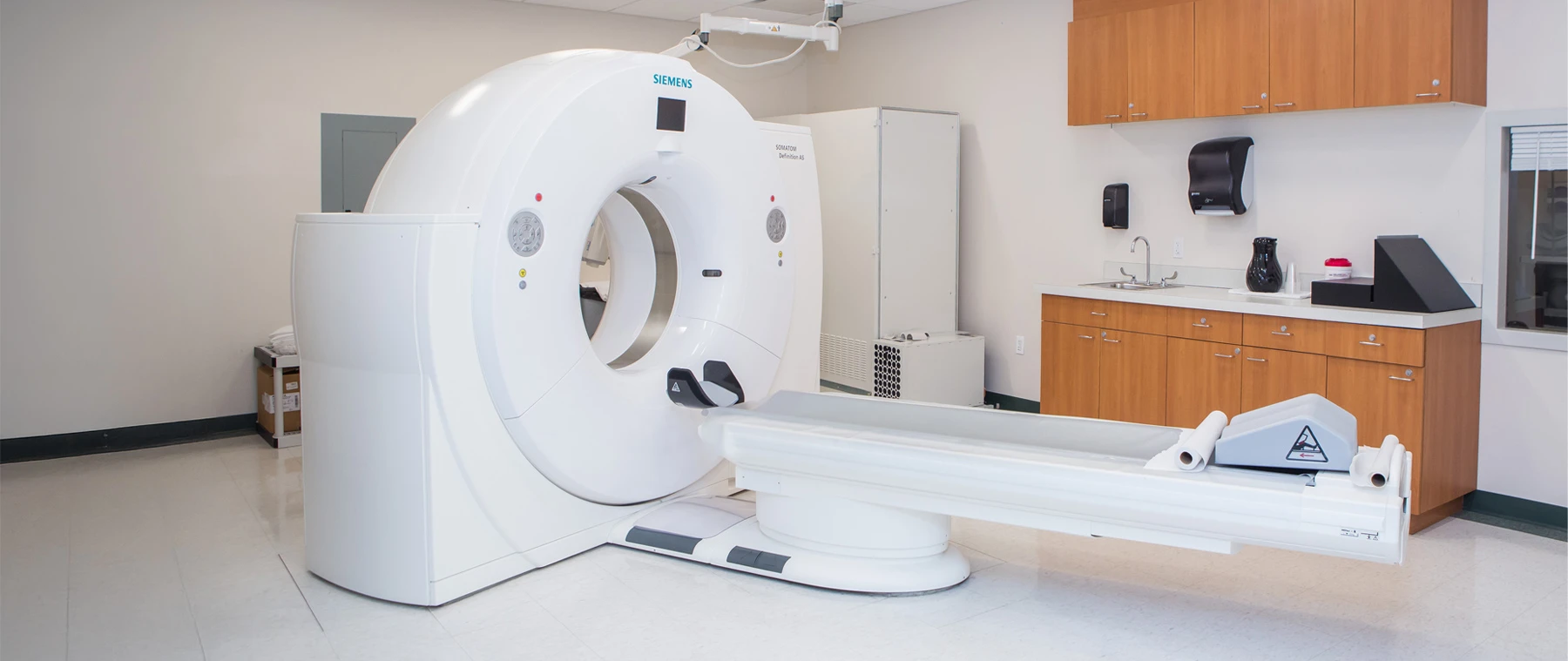CT Coronary Angiography
Noninvasive imaging study assessing for diseased coronary arteries.
What to expect
Scan time takes 1 -2 minutes
Drink plenty of water after the exam
You can immediately return to your normal activities
- A technician will insert an IV line in your hand or arm.
- The technician will also place electrodes on your chest.
Non-Invasive Procedure Can Identify Heart Attack Risks
Heart disease is the number-one killer of American men and women. The best prevention is a healthy lifestyle, but screenings to detect possible problems are also important. Many people with heart disease are not diagnosed; about half of all heart attack victims reported no prior symptoms.
- There are many ways to assess heart disease risk factors, including electrocardiograms (EKGs), blood pressure and cholesterol monitoring, and stress tests.
- Doctors often want a close-up view of coronary arteries so they can look for blockages that may lead to a heart attack. For years, the only way to get that view was by cardiac catheterization, a procedure that involves threading a tube through your arm or groin and into the coronary arteries. The invasive procedure comes with a number of inherent risks and often reveals no significant disease.
- But now there's a non-invasive test available which provides much of the same information, but without any known risks. A CT coronary angiogram also enables radiologists to examine blood vessel walls, which the catheterization procedure does not.
- Main Street Radiology installed the first 16-detector spiral CT in Queens. With this new technology, we became one of the first centers in the tri-state area to perform CT coronary angiography.
The CT Coronary Angiography Procedure
A CT coronary angiogram relies on a powerful X-ray machine to produce images of your heart and its blood vessels.
How Does It Work?
- A technician will insert an IV line in your hand or arm to inject dye that will make your heart's arteries visible on the images. The technician will also place electrodes on your chest to record your heart rate.
- You'll lie on a long table that slides through a tunnel-like machine. During the scan you'll need to stay still and hold your breath for a few seconds so as not to blur the images.
- Although the actual scanning portion of the test may last only a minute or two, the whole process may take up to an hour.
- Afterward, you can immediately return to your normal activities. It's a good idea to drink plenty of water to help flush the dye from your system.
Already Scheduled for A CT-Scan?
Already Scheduled for A CT-Scan?
Learn how to prep for your medical procedure.
Five convenient locations
Schedule an Appointment
Online
Fill out this form and we'll contact you as soon as possible. Please do not include any personal or financial information when using this form.
By Phone
Call or text to schedule an appointment. You may text us any required information (name, date of birth, and a picture of your prescription.) and a scheduling representative will be in touch.
- Call Us: (718) 428-1500
- Text Us: (929) 430-2761
HOURS
Monday-Friday: 8 a.m. to 8 p.m
Saturday: 8 a.m. to 4 p.m.
Sunday: 8 a.m. to 2 p.m. (Flushing Office Only)

